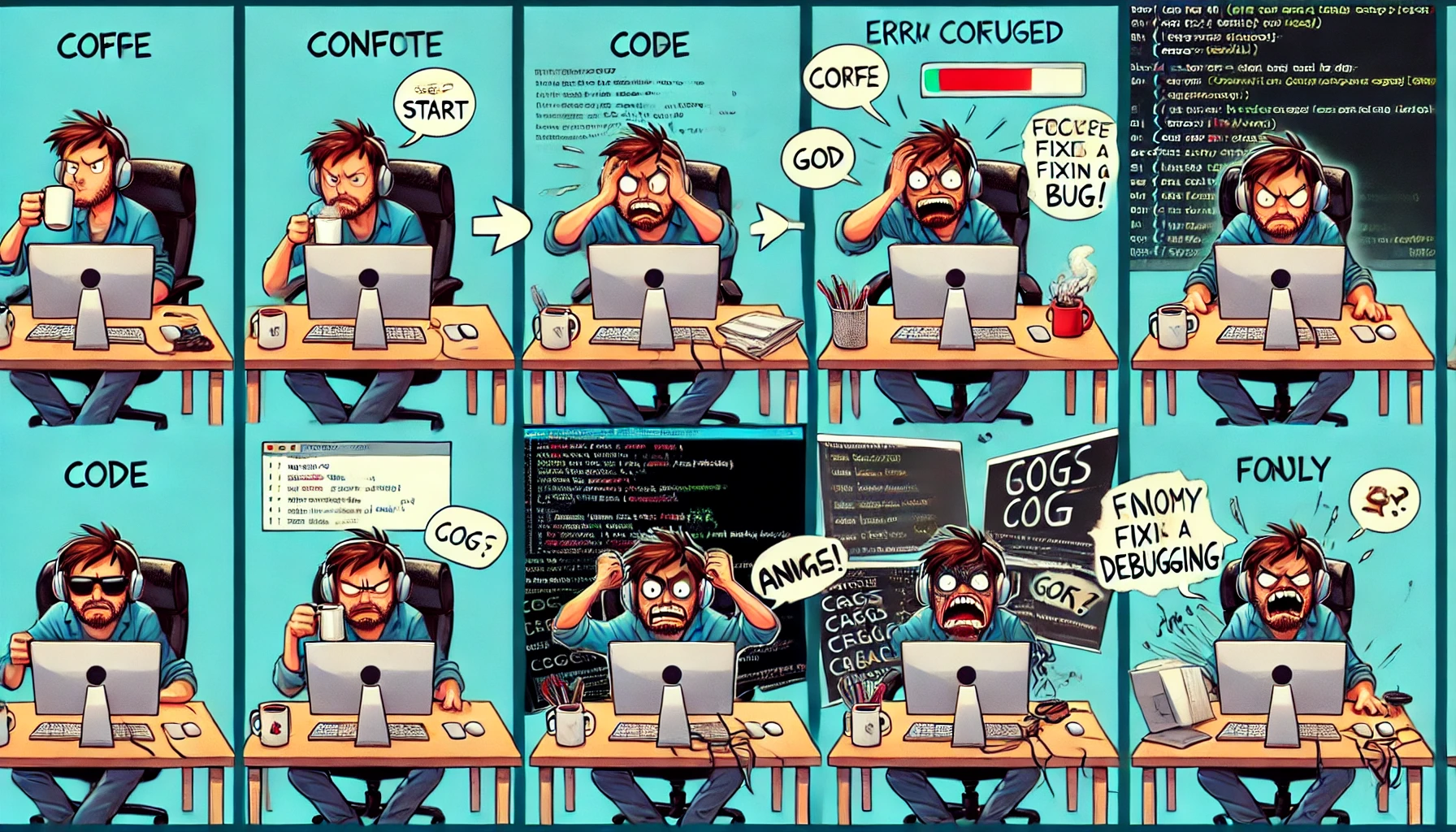If you’ve ever worked as a developer, you know that fixing a bug is never just fixing a bug.
It’s an emotional rollercoaster, a psychological test, and sometimes, a personal attack on your own intelligence.
And no matter how many times we do this, it always follows the same pattern.
1. Confidence (“This will be easy.”)
You open the ticket, read the description, and think, Oh, I see what’s happening. I’ll knock this out in 10 minutes.
Maybe you even tell your boss or a teammate:
“I’ll have a fix pushed soon.”
(A fatal mistake.)
Every. Single. Time. I convince myself that it’s just a quick fix.
I even schedule my next coffee break around it.
It’s like walking into a trap you built yourself… but you keep doing it anyway.
2. Confusion (“Wait. What?”)
You try the obvious fix. It doesn’t work.
You check the logs. The logs don’t make sense.
You check the database. The values should be correct.
You stare at the code like it personally betrayed you.
You read the same line ten times, convinced you’re missing something.
You start questioning your sanity.
“This should work. Why doesn’t it work?”
Welcome to the rabbit hole.
3. Denial (“This bug shouldn’t even be possible.”)
At this point, you start questioning reality itself.
- This code has been running fine for years. Why is it breaking now?
- It works locally but not in production. What dark magic is this?
- Did I introduce this bug? No… no, it can’t be me. Right? RIGHT?
At this point, I start suspecting cosmic interference.
Mercury must be in retrograde.
Maybe the server just hates me.
Or maybe… just maybe…
The compiler is broken.
Clearly, it’s not my fault.
It can’t be.
4. Bargaining (“What if I just… add some debug logs?”)
You’re lost. Desperate.
You start throwing in var_dump(), console.log(), and debug prints like a mad scientist experimenting with electricity.
I’ve added so many logs that my console looked like the Matrix.
“Maybe if I just add one more debug statement, everything will make sense.”
It never does.
Nothing makes sense. You add more logs.
You commit to a full-on print statement religion.
The logs only make things worse.
5. Anger (“WHO WROTE THIS CODE?!”)
You check git blame. You see a name.
It’s your name.
…Oh.
This is the stage where I briefly consider quitting tech and becoming a goat farmer.
Maybe life would be simpler if I just herded goats.
Goats don’t have bugs.
6. Acceptance (“Fine. I’ll actually debug this properly.”)
You take a deep breath.
You go back to the basics.
Step through the code. Check every assumption.
Slowly, painfully, you start to understand.
You realize you were overcomplicating things.
You stop treating it like a personal attack and start treating it like a problem to solve.
And then, after hours (or days)…
You find it.
The bug.
Some missing condition. A logic error. A typo.
Something so small yet so catastrophic that you briefly consider quitting tech again.
I’ve lost hours to a misplaced semicolon.
I’ve questioned my entire career over a <= that should have been <.
And in this moment? I feel both victorious and ashamed.
7. Victory (and Regret) (“Fixed! …Oh no.”)
You push the fix. You celebrate.
You feel like a god.
Then you look at the time and realize:
You just spent 6 hours fixing a one-line bug.
You close the ticket. You move on.
You tell yourself it won’t happen again.
But deep down, you know the truth.
It always happens again.
Because this is the life we chose.
The endless cycle of confidence, confusion, denial, bargaining, anger, acceptance, and regret.
And honestly?
I wouldn’t have it any other way.
